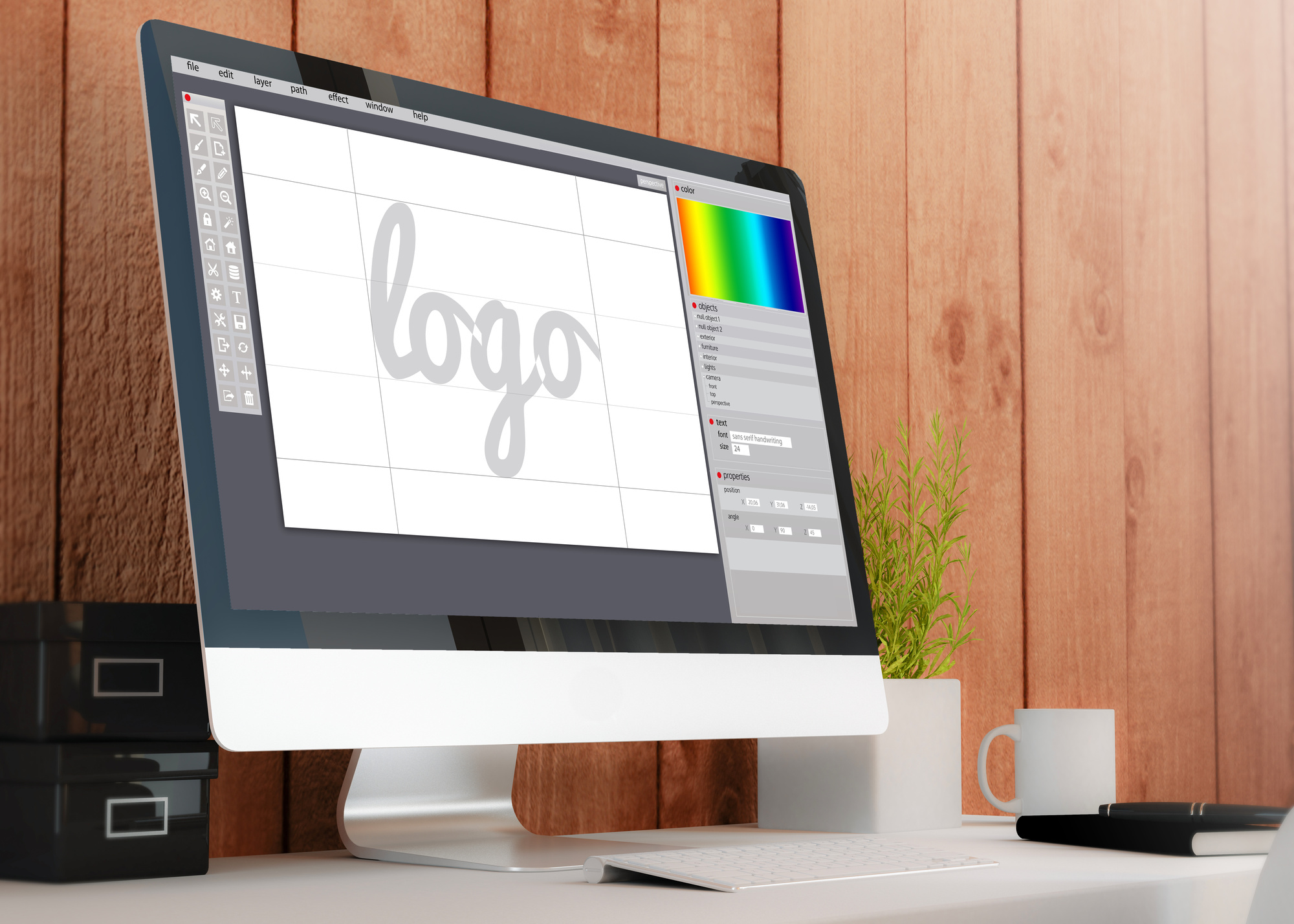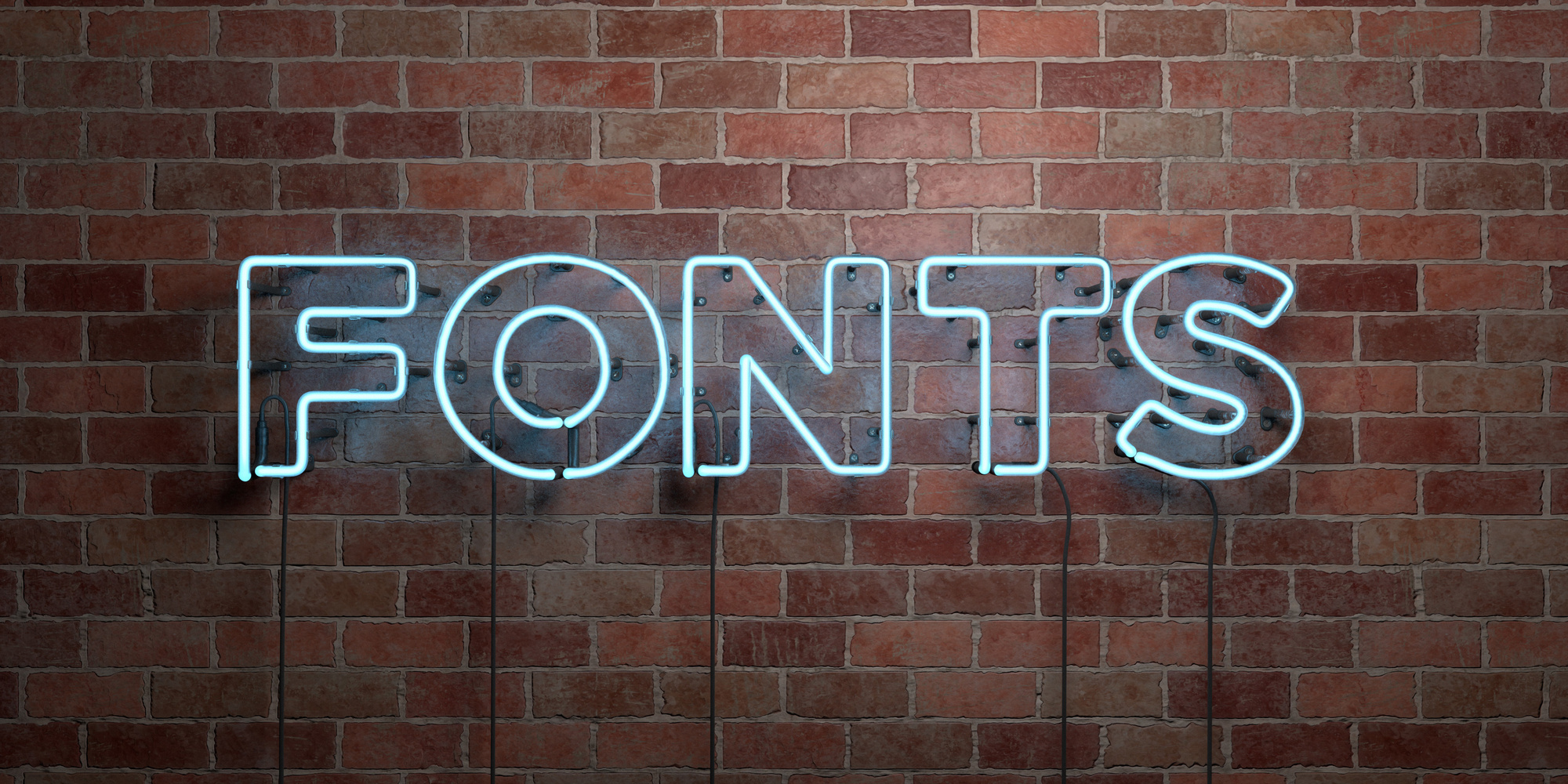7 Examples of Bad Logo Design We Can All Learn From
Posted on May 10, 2018 by Logo Design Tips and Tricks

With your brand competing against thousands of other companies in your industry, your logo means more than you know. Your colors, images, graphics, fonts, and more determine the overall success of your business.
But sometimes, you encounter a bad logo (or, worse, your logo leaves much to be desired). Even some of the world’s leading brands are guilty of bad logo design.
Avoid this bad branding by steering clear of these damaging mistakes with your company logo.
1. Starbucks, 1971
Starting off with one of the worst logos in recent history, Starbucks has come a long way since their inception.
Long before they were the biggest coffeehouse chain in America, they were a simple coffee bean retailer. That didn’t stop them from scaring the heck out of customers with their ugly brown mermaid selling coffee, tea, and spices. There was also a brown belt behind the logo, so it looked like they had the championship belt in the Bad Company Logos division.
Thankfully, when they implemented espresso drinks on their menu they rebranded, saying goodbye to the brown and the portly mermaid for a simpler one. Make sure your colors evoke better emotions than brown. Plus, don’t have characters or graphics that scare the wits out of your audience.
2. Pepsi
Now you might be thinking, “These guys are world-famous! How could they possibly have a bad logo?” To which we say, “You haven’t looked at it long enough.”
In fact, you can use the logo as a way to curb your appetite for a sugary soda. On par with what will happen to you if you consume their drinks, Pepsi’s red, white, and blue logo gives the slight appearance of a fat person.
You read that right: Put a head and arms in the red, legs in the blue, and a belly button in the white, and you have a cute fat guy with his stomach protruding from his shirt. While they aren’t keeping any secrets from the public, perhaps it’s best to keep your logo from any negative connotations.
3. The 2012 London Olympics
By far one of the worst logos ever created is not by a company, but by an event.
Back in 2012, London was honored with hosting the Olympics. They took this honor and consequently flushed it down the toilet with their horrendous logo. With zero of London’s famous landmarks, as well as backlash for looking like a distorted Swastika (or something even less savory), the logo was a complete flop.
Instead of using abhorrent typography and ambiguous shapes, make your logo as clear as day. As we can see, room for interpretation is not always the best for your brand.
4. Microsoft Bing
We’ve never met a Microsoft logo we did like. Bing, the search engine nobody uses and never will, is no exception to logo failure.
In 2009, it received the award for “worst-designed logo of the year,” and with great reason. The typography is an absolute eyesore, the colors are unattractive, and the overall unprofessional appeal would be why nobody uses Bing.
Typography and color are major factors in brand logo success. Do research to find what your industry and competition use, as well as audience testing, to figure out what emotions work best for your brand.
But, for everyone’s sake, be the opposite of Bing.
5. Flightning
Odds are, you’ve never heard of this company. And a quick search online turns up zero results for a company with this brand name. Maybe that’s because their logo was straight up awful.
Stating the obvious, this is a deliberate mockery of both Facebook and Twitter. Whoever developed this logo gives a whole new meaning to lazy; the “f” has the same typography as Facebook, the outline of the square too. The color seems to be a blend of the two social media monsters, and the only real difference is the “f” is at an unfortunate angle.
Perhaps the “f” is pointing down, as in “this ugly logo should be burned to the ground.”
Don’t make a cheap imitation logo. Be original and unique.
6. British Telecom
There must have been a mistake or lack of communication with this terrible logo. Ugly doesn’t even cut it with British Telecom, or “BT.”
Apparently, the company has altered their logo a whopping four times in the past 30 years. This is not good for any brand.
The abbreviation isn’t the problem, per se. What is a problem is the color…or, colors. BT is in a sans serif typeface, splashed with a potent combination of red, pink, blue, and green.
Ever heard of a successful company with that kind of color wheel? Yeah, we haven’t either.
This goes against what’s known as “inherent logic,” which is immediately understanding or “getting” what the design is trying to accomplish. With BT, it’s anyone’s guess what they’re attempting to convey.
To curtail bad branding, have a logo that people can comprehend and do NOT mix colors that have no business being mixed.
7. Bodega
Woof. Startups have a tough time as it is with getting adequate funding and quality design, but dang, Bodega was way off with their bad logo design.
It’s rather unfortunate: The Spanish meaning of “bodega” is a small Hispanic grocery store, or essentially what Bodega the company is trying to get rid of. Using a cat as part of their logo throws this gentrification mission in the face of immigrant-owned establishments.
This is, quite frankly, irresponsible and culturally insensitive.
We hope this goes without saying, but never ostracize or mock any race, gender, nationality, or disability in your logo. Excluding people with your bad logo is a one-way ticket to declining business.
Don’t Fall Victim to Bad Logo Design
As you can see in these seven examples, having a bad logo is quite common. The only way companies can salvage their brand reputation is by continuously improving their logo design.
Make sure you aren’t advertising an ugly logo by keeping updated with current trends, doing market research, and basically having some common sense.
If you have a bad logo design and need help establishing your brand as an authority, check out our sleek and simple Online Logo Maker tool.
7 Ways That a Logo Redesign Can Benefit Your Brand
Posted on May 02, 2018 by Logo Design Tips and Tricks

Your logo is the icon of your business that lets people know who you are. So why would you want to invest in logo redesign?
Believe it or not, there are times when it makes sense to alter your logo, or even start from scratch. Even globally recognized brands update their logo occasionally.
While logo redesign can be risky, it can also be rewarding when performed correctly.
Take a look at seven key benefits that a new logo can bring your business.
#1 – Logo Redesign Keeps Your Image Fresh and Modern
Logos tend to be based on current design trends. Shape, color, font, and other elements are usually dead giveaways as to when the logo was created.
Updating your logo to reflect the current times can serve a few different benefits.
For starters, it shows people you’re not resting your laurels. Rather, you’re actively engaged in what’s happening around you.
It also demonstrates your resiliency and flexibility. You’re not resistant to change, but can keep up with changing markets, tastes, and consumer needs and preferences.
Finally, a new logo can make your brand appear fresh and cutting-edge. What looked great twenty years ago won’t usually have the same impact today. It’s an easy, cost-efficient way to give your brand a boost.
#2 – A New Design Can Attract Attention to Your Brand
When you introduce a new logo in your business, it’s hard for others not to notice.
The right logo will get people talking about your brand. It’s also a great opportunity to build some PR and ignite conversations surrounding your redesign.
Having people notice and comment on your new logo gives you countless brand impressions. Take this surge in publicity to help people learn more about your company and what the new design means for those you serve.
#3 – You Can Use Your Logo to Raise Awareness
Lacoste once changed its iconic crocodile logo in lieu of 10 different animals to raise awareness for endangered species. Each of the 10 animals were members of the endangered species list.
Interestingly, each shirt adorned with one of these new animals was released in limited supply. The number for each was based on the number of how many of each animal remains in the wild.
For example, there were only 157 Kakapo Parrots left, so Lacoste printed 157 shirts with the parrot logo.
In total, there were only 1,775 shirts produced, an alarmingly low number for a group of 10 species.
Many saw the move as risky and controversial, but it certainly attracted attention to the brand.
You can use your own logo to raise awareness for a cause. For example, you can add a ribbon to raise cancer awareness. A subtle nuance won’t alter the overall design, but it can add that little something extra so people will know there’s something fueling the change.
#4 – Change Your Logo for Rebranding Purposes
If you’re undergoing a rebranding strategy, a logo redesign makes perfect sense.
Rebranding itself isn’t a decision to take lightly. It’s an opportunity to connect with new audiences, reshape your image, and highlight your company’s new products and values.
BP’s iconic green and yellow logo saw a drastic redesign in 2003 when it switched from its badge-style logo to a beautiful Helios image.
The Helios resembled a sunflower that sported traditional BP colors. The home run was the imagery linking it to cleaner, better energy and a focus on BP’s environmental soundness.
Logo design should be a part of any rebranding efforts. While you might not be changing your business name, you can alter your logo’s color, font, and other stylings to reflect the new you.
#5 – Tailor Your Logo to New Markets
A new logo can help you break into new markets by appealing to different audience segments.
This one will take a little bit of research to find out what certain audience segments are most responsive to.
Using your new logo to reflect your company’s values and promote yourself correctly can spur new business growth.
Consider using the psychology of color and shape when tailoring your new logo. These elements can have a huge effect on the type of customer your logo will attract. It will also ensure your new design promotes the brand image you’re expecting.
#6 – Simplify Your Logo for Better Visibility
Some logos are complicated. Too much detail can get lost in translation, which makes them less effective.
Complex logos aren’t necessarily a bad thing. For example, Metro Goldwyn Mayer’s classic logo with the lion and elegant framework has remained unchanged for decades.
But printing such a complex logo can prove difficult. You likely won’t retain many of the fine details that make it so unique, which could prevent your logo from being as effective as you expect.
Simplifying a detailed logo can make your message stand stronger. Your audience can immediately recognize what your logo is trying to say.
Remember, it’s not a gallery painting. People aren’t going to stare at your logo for minutes at a time trying to figure it out (unless they’re logo enthusiasts).
#7 – A New Logo Can Boost Your Revenue
All of the above benefits of logo redesign can ultimately lead to an increase in profits.
When people start talking about your new logo, your brand receives exposure. It gives people a chance to learn more about you, your products, your services, and your company values.
By appealing to new audiences, you’re able to share your brand and products with more people than you were before.
Redesigning your logo can also help create top of mind awareness. It makes people think about your company and what you offer. As a result, you could experience an increase in sales, website traffic, social media engagement.
Yes, your new logo can be that powerful.
Wrap Up
Getting a good logo doesn’t have to be time-consuming or expensive.
Our online logo maker allows you to create a high-quality logo quickly and easily. Its simple user interface means anyone can be a logo designer, even if you don’t have a background in design.
Try it yourself for free and get your new logo today!
5 Gorgeous Label and Logo Fonts
Posted on March 21, 2018 by Logo Design Tips and Tricks

There’s no denying the appeal of a great logo.
Think of some of the most iconic logos for today’s biggest brands. They don’t only benefit from having great design. They also use quality fonts.
Your business font is a vital part of branding and should be consistent in packaging. You need to find a font that will make your brand stand out while also making it easy to read for the consumer.
Are you looking to create your own logo? Check out these gorgeous label and logo fonts that stand out in the crowd. Read on to learn more.
1. Garamond
No list of best logo fonts is complete without a reference to Garamond.
Garamond is a group of serif typefaces since the 16th century. They first gained popularity from texts and hardcover books.
Today, Garamond remains one of the most used typefaces in the world. They add a touch of sophistication and professionalism, which make them a great logo font.
You might recognize Garamond from Apple’s logo. The combination of an elegant typeface and playful design made it an iconic piece of branding.
2. Bodoni
Have you ever seen the logo for Armani? What about Calvin Klein or Vogue?
Bodoni is a popular logo font for upscale brands. This longstanding typeface combines thick and thin letters to create bold and daring logos. It’s a favorite of the fashion industry.
You can use Bodoni to create an eye-catching and visually appealing logo.
3. Futura
There’s no shortage of brands with Futura in their logo.
You’ll see Futura in advertisements for everything from Volkswagen to FedEx. This sans-serif typeface creates a modern yet playful look.
Why go with Futura? For one, it helps create a strong brand identity. The lettering customizes to create modern and easily recognizable brands.
Futura is also widely used in print advertising. You can print out your Futura logo with custom roll labels.
4. Helvetica
You’re probably familiar with the name Helvetica.
Countless brands use this typeface in their logos. You’ll recognize this sans-serif typeface in logos for American Airlines, Ducati, Harley-Davidson, JC Penney, and more.
Helvetica may be a staple in the advertising world, but it’s still relatively new. Swiss designer Max Miedinger created this type family in the 1950s.
Helvetica is widely used thanks to it simple yet creative design. It also creates a sense of comfort and familiarity since it is in the logos of countless brands.
5. Proxima Nova
Proxima Nova may be the newest font on this list. But that doesn’t mean it’s any less impressive.
Proxima Nova had a meteoric rise since its inception in 2005. Over 25,000 websites use this font.
You’ll recognize this font in logos for big brands like Twitter and Spotify. It’s a modern and fun typeface for any brand. This is a great option if you’re looking to go digital or appeal to a younger audience.
More Logo Fonts
The right logo font makes all the difference. Use this guide to create the best logo for your brand.
Are you looking to create your own logo? We can help. Check out our free logo maker today.
4 Tips for Creating Great Medical Center Logos
Posted on March 21, 2018 by Logo Design Tips and Tricks

Unhappy with your practice’s current logo design?
Feel like your logo looks like every other hospital, pharmacy, or medical professional’s office in your neighborhood?
Do you know that you need to make a change to your medical center logos, but aren’t quite sure what that change should look like?
Don’t panic – we’re here to help you.
In this post, we’ll tell you a few of the most important elements you need to consider in your medical center logos. Then, we’ll let you know where you can go to create several potential logo designs.
Read on to learn how to create logos that reinforce your brand message, differentiate you from your competition, and make an emotional connection with your target market.
1. Consider the Central Image
One of the most important things to consider when it comes to creating strong medical center logos?
The central image of your design.
This image will help you build your brand recognition, connect with your target market almost instantly, and, above all, make it clear the specific type of medical services you offer.
This last point is especially crucial.
While, yes, things like a stethoscope, a red cross, or even a drawing of a medication bottle communicate some kind of medical service, these images don’t do a lot to make it clear exactly the kinds of services and specializations you provide.
For example, if you’re a cardiologist, then you might want to make a logo that incorporates a heart rate monitor into your design. If you specialize in pediatric medicine, include children in your logo, and use lots of bright colors in your design.
Above all, your central image should illustrate the kinds of patients you see and should make the specifics of your practice clear.
Not only do stereotypical images fail to set your practice apart from the competition, they also do nothing to give your market any kind of information. Think bigger, and be better.
2. Choose Colors Carefully
Once you’ve decided on your central image, you’ll then need to start thinking about the colors you want to include in your design.
For best results, we recommend sticking to a minimum of two colors and a maximum of about four.
Yes, being bright and bold will help you to stand out – but if your medical center logos look like the page of a child’s coloring book, you’ll stand out for all the wrong reasons.
Plus, keep in mind that color psychology will also play an important role in your design. If you provide natural and holistic services, you may want to go with greens and blues. If you offer emergency services, red and white will make that clear and create an emotional response in your target market.
Above all, the colors you choose to include in your logo design should be consistent with the rest of your branding.
For example, take a look at look at the website for this alcohol rehab center.
They’ve focused their entire website design on the colors blue and white, to help to keep website visitors calm and focused. The text of their website is also white, which is further emphasized by the blue background of the page.
The writing in their logo is consistent, in the same white color, as is their design – a soothing, wound shape like an elongated spiral. This design and the color scheme is consistent with the services they set out to provide.
3. Don’t Neglect the Size
Once you’ve chosen the colors and the central image you’d like to use, it can sometimes feel like your medical center logos are complete.
However, there are still a few more things you need to consider.
One of the most important?
The size not only of the logo as a whole but all of the elements within it.
Think about how many different places that logo is going to be displayed. It may be on physical signage outside of your practice. It might be on your business cards, your social media accounts, printed in a newspaper, or even on the back of the jersey of that local sports team you sponsor.
When you’re creating your design, it’s up to you to ensure that, in any size, your logo images and text are clear, easy-to-read, and don’t end up looking like a Monet painting.
Don’t overcrowd your logo design, include too many words, or create several smaller images. Instead, go for a sleek design that tells your consumers you don’t need all the bells and whistles to get noticed.
4. Typography as a Branding Strategy
We’ve also discussed the importance of choosing the right colors when it comes to your medical center logos.
Now, let’s quickly discuss how the right font can influence buying decisions, build your center’s brand recognition, and help you to connect with your target market faster than ever.
Of course, the most crucial thing to keep in mind is legibility. As with the image you choose, your font choice will still need to be readable in many different forms.
But your font can also reinforce your overall brand and set you apart from the competition. If you’re an eye doctor, use the same font that’s used on eye test charts. If you work with children, you could choose a font that looks like it’s been written by a child (though is still legible, of course).
Your font matters, so don’t be afraid to take a risk.
Ready to Design a Few Medical Center Logos?
One final thing to keep in mind regarding logo design?
You probably won’t get it right the first time.
To come up with several different logo design options that you can let your patients, your employees, and your target market vote on, use our free online logo maker tool.
Still need a little more advice on how to design the most effective logo possible?
Be sure to check out our blog for access to the latest tips and trends when it comes to logo design.
We can’t wait to help you strengthen your brand with a new logo.








